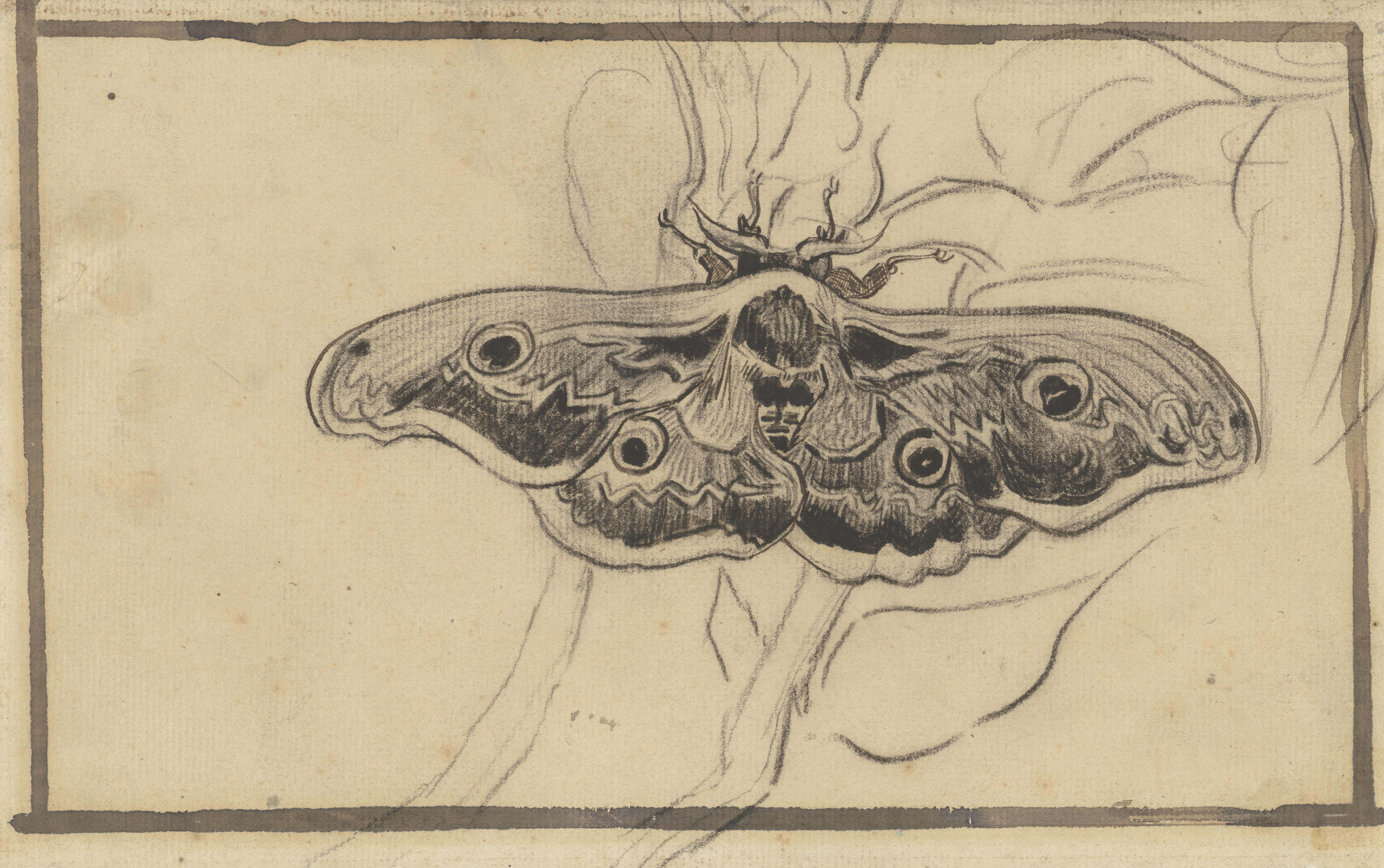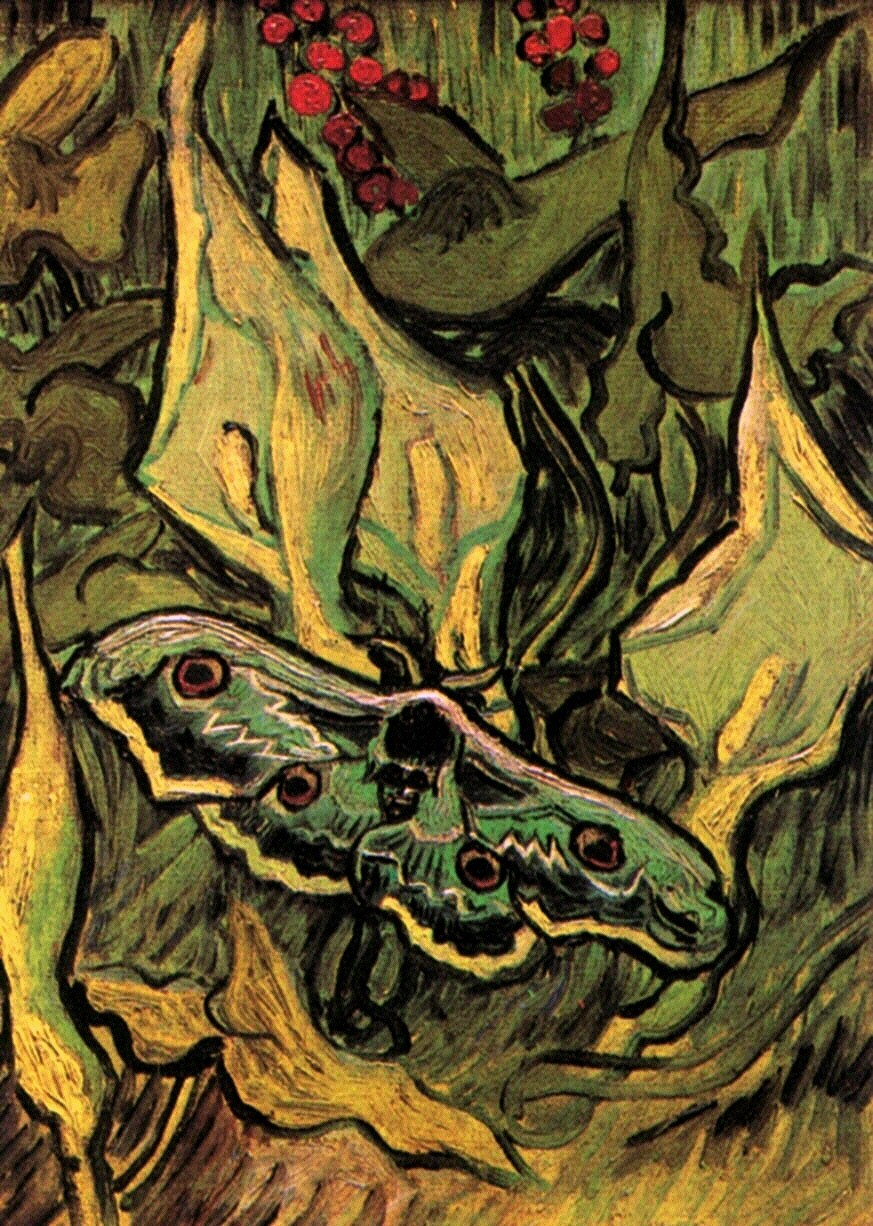Great Peacock Moth / Aristotle’s Silkworm (Saturnia pyri) Life Cycle – Adam Grochowalski, Kraków, Poland (2015).
The filmmaker Adam Grochowalski of the Kraków University of Technology found the female butterfly in the Komarno district of Slovakia. The butterfly was attracted to light at night. He brought the female butterfly to his home studio in Kraków Poland and captured almost the entire life cycle in exquisite detail. The observations include emergence from the eggs, larval (caterpillar) stages, pupation (chrysalis) and overwintering inside a cocoon. In the final scene, the mating of the mature butterflies after they emerge from their cocoon to complete their life cycle can be seen. Grochowalski did an especially good job in capturing the molting transitions from one instar to another.
The following video is from another Saturniid wild silkworm species (Saturnia pavonica) in which you can see the oviposition and subsequent chitin formation around eggs in macro.
According to Grochowalski, the eggs hatched within 7 to 10 days after the female butterfly oviposited. The entire larval development involving four instars lasted five weeks counting from the hatching of eggs. Weaving of the cocoon took two days for the caterpillars and creation of a chrysalis inside the cocoon took about 5-7 days. After that the pupa overwinters. This moth species produces one generation per year.
Caterpillars are polyphagous and can eat leaves of many different tree species such as plum, apple, blackthorn, ash, walnut, poplar etc. However, in a rare encounter it was documented to feed on the endemic oriental gum tree (Liquidambar orientalis) . These endangered relic tree populations form monostand forest patches in Southeastern Turkey. During the filming project Saturnia pyri larvae were fed on leaves of cherries (Cerasus vulgaris) or pear tree (Pyrus communis).
The butterfly of this moth is quite striking and have been observed by notable personalities in history including Aristotle, 16th century illustrator Jacobo Ligozzi and the famed artist painter Vincent van Gogh. In May 1889 van Gogh encountered the Giant Peacock moth in the garden of the clinic at Saint-Rémy-de-Provence.
‘its coloration astonishingly distinguished: black, grey, white, shaded, and with glints of carmine or vaguely tending towards olive green; it’s very big’
— Vincent van Gogh — May 1889
At first, he thought it was a Death’s-head Hawkmoth (Acherontia spp.). In his notes he states:
‘its coloration astonishingly distinguished: black, grey, white, shaded, and with glints of carmine or vaguely tending towards olive green; it’s very big’.
He drew the moth with black chalk and then used a fine pen and brown ink to fill in the legs and antennae. He used brown ink to accentuate the dark parts of the moth. He used the same ink with a pen and brush to draw a frame around the image. In his notes he explains why he intentionally decided to draw the moth instead of making a painting of it:
‘To paint it I would have had to kill it, and that would have been a shame since the animal was so beautiful’.
Eventually he did paint another version later using the black chalk drawing as the template. Curators of the van Gogh Museum indicate that this is the reason why there are splashes of oil paint on the paper of chalk drawing.
‘To paint it I would have had to kill it, and that would have been a shame since the animal was so beautiful’
— Vincent van Gogh
Mating of moths is another spectacular event. Pheromones play a central role in finding mates. The elaborate antennae are highly sensitive chemical detectors. Here in Grochowalski’s footage finding mate was probably not a big challenge for the captive offspring. The female moth laid about 20 eggs and the emerging caterpillars were of both sexes.
Caterpillars are under constant threat from parasitoids. Production of protective poisonous chemicals are costly requiring expensive metabolic activity. Therefore caterpillars of some moths and butterflies eat their own discarded skins to regain protective chemicals. According to Grochowalski none of the instars showed this kind of behavior.
Saturnia pyri is the largest moth in Europe. It lives in southern Europe, parts of Asia and North Africa but it occasionally makes a northward move. It was recorded in England only once in 1984.




5 Comments
j’ai un couple qui sait reproduis ici en Touraine et ils ont pondu plusieurs œufs
Se magnifique!!!!
I found a dead female Great Peacock moth in my garden in the Charente Maritime on 8 June 2019. Photo available on request